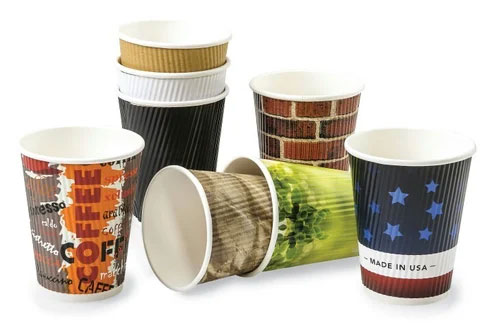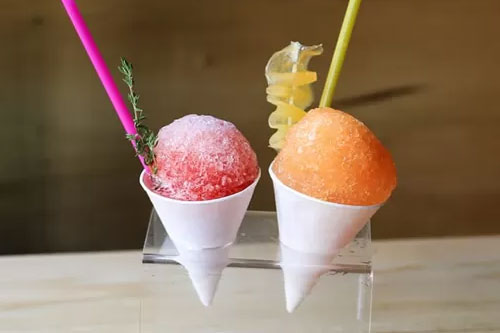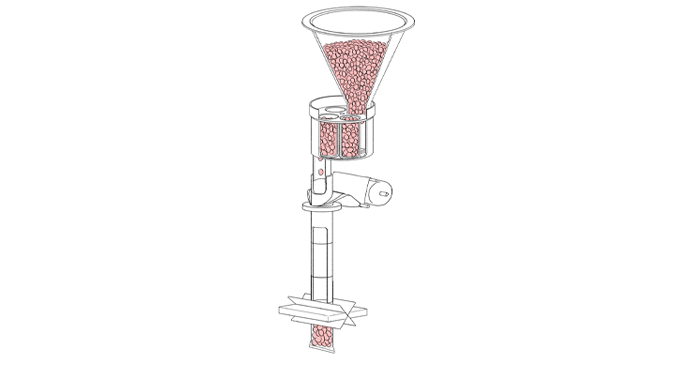Paper Cup Making Business: Crafting Success from Sustainable Innovation - Project Report

In a world increasingly conscious of environmental impact, the quest for eco-friendly alternatives to everyday products has gained substantial momentum. Among these alternatives, paper cups have emerged as a symbol of sustainable innovation and a tangible solution to the global plastic waste crisis. As the shift towards greener practices intensifies, the paper cup making business has become an appealing avenue for entrepreneurs looking to combine sustainability with entrepreneurship.
The paper cup, once an unassuming vessel for our daily dose of coffee or tea, has undergone a significant transformation. What was once predominantly a single-use plastic item has been reimagined in a biodegradable, eco-friendly avatar. This shift is not just a trend but a necessity, as the world grapples with the consequences of plastic pollution, prompting both consumers and businesses to seek greener alternatives.
The paper cup making business encapsulates this transformative journey – from raw materials to the final product, it embodies sustainability at every stage. This article delves into the intricate world of paper cup manufacturing, providing a comprehensive guide for aspiring entrepreneurs. Whether you are a seasoned businessperson looking to diversify or someone with a passion for eco-friendly solutions, understanding the nuances of this industry can set you on the path to success.
In the pages that follow, we will explore the essentials of the paper cup making business – from the raw materials required to the machinery involved, the manufacturing process, market trends, and growth opportunities. We will navigate through the challenges and provide insights into how to overcome them. By the end, you will have a thorough understanding of what it takes to establish and sustain a thriving paper cup manufacturing venture.
So, if you're ready to embark on a journey that combines entrepreneurship with environmental consciousness, fasten your seatbelts, as we unravel the art and science of paper cup making – a business venture that's not just profitable but also poised to make a positive impact on our planet.
Paper Cups Market Outlook (2023 to 2033)
The global paper cups market is on a trajectory of remarkable growth, with projections indicating substantial expansion in the coming decade. In 2023, the market is poised to reach a significant valuation of US$ 10 billion, marking the beginning of an exciting journey. Over the next decade, from 2023 to 2033, the paper cups market is expected to maintain a robust Compound Annual Growth Rate (CAGR) of 4.4%, ultimately surging to an impressive valuation of US$ 14 billion by 2033.
In 2023, the market is set to reach US$ 10 billion, with an anticipated robust CAGR of 4.4% from 2023 to 2033, culminating in a remarkable valuation of US$ 14 billion by 2033.
Throughout this period, the market is set to exhibit a consistently positive growth trajectory, with substantial sales and increasing demand for paper cups. A recent report by Future Market Insights paints an optimistic picture, indicating a surge in paper cup sales within this ten-year span.
Among the various segments within the market, the hot beverage cups segment is projected to take the lead, driven by the evergreen popularity of tea and coffee and evolving consumption patterns, particularly among millennials. Notably, the paper cups industry is expected to generate an absolute dollar opportunity of US$ 4 billion between 2023 and 2033.
Major Growth Drivers Opening a Plethora of Opportunities for Paper Cup Manufacturers:
The rise of paper cups, including paper coffee cups, paper tea cups, cupcake paper cups, paper baking cups, and paper ice cream cups, is a phenomenon gaining tremendous traction across diverse industries. A pivotal factor that resonates with both consumers and manufacturers is the use of biodegradable materials in crafting these cups, aligning them with eco-conscious trends.
Compared to their counterparts fashioned from other materials, paper cups are hailed for their practicality. They are single-use, offering convenient disposal options post-usage. Over the evaluation period, the demand for paper cups is anticipated to surge by 1.4 times its current levels.
As global environmental concerns gain prominence, the preference for biodegradable and eco-friendly products is experiencing widespread adoption. Paper cups, particularly paper coffee cups and paper tea cups, have emerged as clear favorites among consumers, outshining their plastic counterparts.
Cafeterias, quick-service restaurants, and hotels are expected to embrace paper ice cream cups, paper coffee cups, paper tea cups, cupcake paper cups, and paper baking cups, in response to heightened demand. Additionally, the increasingly hectic and fast-paced lifestyles of individuals are anticipated to contribute significantly to the rising popularity of paper cups over the next decade.
Key Segments and Growth Trends in the Paper Packaging Industry.
Paper Cups Market:

CAGR (2023 to 2033): 4.4%
Market Value (2023): US$ 10 billion
Growth Factor:
The relentless global pursuit to replace plastic materials with eco-friendly alternatives has paved the way for the prominence of paper-based packaging, particularly paper cups. Additionally, edible cups crafted from grains have emerged as an innovative alternative, further bolstering the growth of this market. This shift in preferences aligns with the escalating need for sustainable, environmentally responsible packaging solutions.
Key Trend:
The burgeoning consumption of beverages and fast food, driven by the fast-paced lifestyles prevalent in developed countries, has sparked the establishment of new coffee shops and fast-serving restaurants. This trend is significantly contributing to the increased demand for paper cups, as they are the preferred choice for serving these on-the-go indulgences.
Paper Cone Cup Market:

CAGR (2023 to 2033): 4.75%
Market Value (2023): US$ 2.2 billion
Growth Factor:
The surging demand for paper cone cups from various sectors, including recreational parks, theaters, and malls, is poised to be a key growth driver. These cups offer a convenient and hygienic solution for serving a variety of snacks and treats, enhancing the overall consumer experience.
Key Trend:
A notable trend influencing the paper cone cup market is the increasing development and deployment of water coolers and vending machines in various environments, including offices, schools, and colleges. This move is aimed at providing convenient access to beverages while minimizing the need for traditional, reusable cups. As such, the demand for paper cone cups as a disposable and efficient serving solution is expected to rise significantly.
Volumetric Cup Fillers Market:

CAGR (2023 to 2033): 4%
Market Value (2023): US$ 6,980.3 million
Growth Factor:
Prominent players in the industry are directing their efforts toward the development of sustainable packaging solutions. The heightened demand for such solutions spans various sectors, including cosmetics. This growing emphasis on sustainability is fueling the demand for volumetric cup fillers, which are integral in the packaging process across industries.
Key Trend:
One of the key trends driving the adoption of volumetric cup fillers is their ability to ensure the highest quality and safety standards in the food industry. These machines play a crucial role in preventing human contamination, thereby safeguarding the integrity and quality of food products. This attribute is garnering significant attention and contributing to the growing demand for volumetric cup fillers across multiple sectors.
Changing Consumer Demands and the Evolution of Foodservice Packaging
Consumer preferences and perceptions of foodservice items, including coffee cups, have undergone significant changes over the years. In the 1990s, a study analyzing various types of coffee cups found that eliminating disposable cups could be costlier and have a greater environmental impact than available disposal options (Hocking 1994). At that time, consumer choices were influenced more by aesthetics and convenience rather than environmental considerations.
However, fast forward to the early 2010s, and Starbucks introduced a program aimed at encouraging customers to bring their own coffee cups, offering a 10-cent discount. Surprisingly, only 2% of customers took up this offer (Minter 2014). Starbucks simultaneously explored paper cup recycling initiatives (Kamenetz 2010).
Today, consumer sentiments have shifted significantly due to heightened environmental awareness, supportive regulatory policies, and brand owners' desire to project eco-friendly images. Younger consumers, especially Millennials and Generation Z, are leading the charge for sustainable solutions and are willing to change their purchasing habits to support environmentally friendly packaging. Fossil-based plastics are increasingly viewed as less preferable due to their negative environmental impact, leading to a surge in demand for more sustainable alternatives, including paper cups.
A European survey conducted in March 2020 involving 5,900 consumers from eight countries highlighted the shift toward sustainability. Nearly 70% of respondents actively take steps to reduce their plastic usage, and 48% are willing to avoid retailers not actively working to reduce non-recyclable plastic packaging. Fiber-based packaging, such as paper cups, is favored by consumers for its perceived sustainability attributes, including being home compostable (72%), better for the environment (62%), and easier to recycle (57%).
Around the world, many regions, states, and cities are moving toward banning single-use plastics, including foodservice packaging like plastic cups. Examples include the EU and Australia planning to phase out single-use plastics by 2023, and Taiwan aiming for a similar goal by 2030 (Chaudhuri 2018). In India's Kerala state, paper coffee cups were included in the ban on the production, sale, and use of single-use plastics.
Progress has been made in collecting and sorting waste for recycling, particularly at the municipal and regional levels. In the USA, curbside collection programs have expanded significantly, with an 87% increase in the number of programs between 2014 and 2017. In 2018, 326 U.S. communities had access to food waste collection, up from 198 in 2014, marking a 65% increase. While these efforts have made strides in recycling, there is still room for improvement in curbside access, participation, and participant behavior to create a more effective circular economy.
Similar intensive recycling efforts have been initiated in Europe and the UK. The Paper Cup Recovery & Recycling Group (PCRRG) in the UK has made significant progress in increasing paper cup recycling. They reported over 4,500 paper cup recycling points for consumers, 115 municipalities collecting paper cups with paper cartons, and 21 waste collectors participating in a national recycling program. Several recycling paper mills, including ACE UK, DS Smith, James Cropper, and Veolia, now accept paper cups. Additionally, at least nine regional councils have included paper cups in their curbside collection programs.
Efforts to promote zero waste have also emerged, with initiatives like the 25-cent tax on disposable coffee cups in Berkeley, California, aimed at encouraging consumers to use reusable cups. Some cafes, such as Nova Familia Coffee and Blue Bottle Coffee, offer incentives like discounts for customers who bring their own cups. Various cities and organizations are experimenting with reusable cup systems, while technology-driven solutions like Muuse's reusable coffee cups have gained traction.
Recycling used coffee cups is technically and economically feasible, but it requires a coordinated effort across the supply chain. Successful recycling programs depend on a consistent supply of used cups, which feed into recycling pulp mills. Challenges remain, including varying waste collection models, policy inconsistencies, access to clean cup volumes, and infrastructure investments in recycling facilities. Despite these challenges, there is a growing commitment to addressing the issue of paper cup waste, with innovative solutions and collaborative efforts across the industry.
Challenges in Recycling Paper Coffee Cups
While paper is the most recycled material in municipal and commercial solid waste, paper cups, specifically those with polyethylene (PE) liners, pose unique challenges in recycling. Despite the intentions of brand owners and consumers to promote recycling, the majority of waste coffee cups still end up in landfills or are incinerated.
Traditional cups with PE liners present operational problems in recycling facilities. During re-pulping, the plastic layer breaks down into flakes that can clog screens used to separate recyclable fibers from contaminants. Materials that pass through the screens can melt on hot rolls during paper manufacturing, causing paper breaks and production disruptions.
Separating the plastic component from the fibrous cupstock is possible and has been demonstrated successfully. Starbucks conducted a pilot program in 2018 to separate fibers from coffee cups, re-pulping them to make recycled market pulp. The recovered fiber pulp was used to produce cupstock, which was then converted into new coffee cups. This project showed that separating PE from coffee cups was not more expensive than from other fibrous-based packaging.
Several major recycled paperboard manufacturers have implemented technologies to handle foodservice waste, including used coffee cups. Companies like WestRock and Georgia-Pacific have optimized their mills to accept foodservice packaging, including coffee cups, by enhancing their pulping and cleaning systems.
While challenges remain in recycling paper coffee cups, progress is being made worldwide, with increased collection, sorting, and processing efforts. Collaboration across the supply chain and innovative solutions are helping address these challenges and move toward more sustainable coffee cup use.










